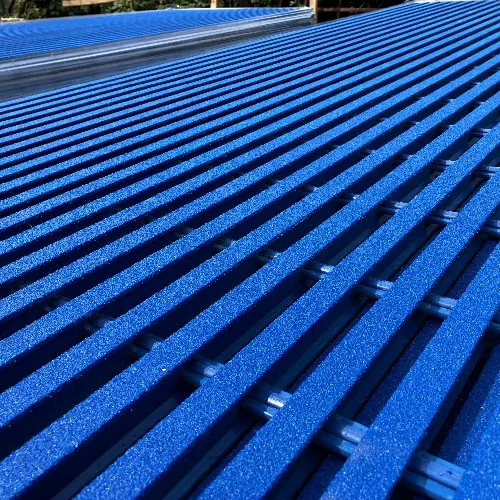loading...
- No. 9, Xingyuan South Street, Dongwaihuan Road, Zaoqiang County, Hengshui, Hebei, China
- admin@zjcomposites.com
- +86 15097380338
- Welcome to visit our website!
Understanding the Benefits and Applications of Sectional Tanks in Various Industries
Understanding Sectional Tanks A Comprehensive Overview
Sectional tanks are an increasingly popular choice for storing water and other liquids in various applications, ranging from industrial processes to agricultural uses. Unlike traditional cylindrical tanks, sectional tanks are constructed from multiple panels that can be easily assembled on-site. This modular design offers numerous advantages that make sectional tanks an attractive option for many uses. In this article, we will explore the features, benefits, and applications of sectional tanks.
What are Sectional Tanks?
Sectional tanks are made up of individual sections or panels, typically fabricated from materials like steel or fiberglass. Each panel is designed to be bolted or welded together to form a larger tank. This allows for greater flexibility in design, as the size and shape of the tank can be customized to meet specific storage needs. Sectional tanks are available in various shapes, including square, rectangular, and custom configurations, making them suitable for diverse applications.
Key Features
One of the most notable features of sectional tanks is their modularity. The ability to disassemble and reassemble the tank makes it easier to transport and install, particularly in locations that may be challenging to access. The panels can be manufactured off-site, allowing for reduced installation times and minimizing disruption in operational areas.
Another feature worth mentioning is the tank's ability to be scaled. Since they consist of separate sections, users can add or remove panels to increase or decrease the storage capacity as needed. This modularity is especially beneficial for businesses that experience fluctuating water demands.
Materials and Durability
The choice of materials for sectional tanks significantly influences their durability and longevity. Steel sectional tanks are often coated with protective finishes to enhance resistance to corrosion and harsh environmental conditions. Fiberglass tanks, on the other hand, offer excellent chemical resistance and can be used for a wider range of liquids, including those that may corrode traditional metal tanks. The choice of material will depend largely on the specific requirements of the application, including the type of liquid to be stored and the environmental conditions.
sectional tanks

Benefits of Sectional Tanks
1. Cost-Effective Sectional tanks often prove to be a more economical choice compared to traditional options. Their modular design can result in lower shipping costs since they can be packed more compactly. Additionally, reduced installation times may lead to lower labor costs.
2. Customizable Each application comes with unique requirements, and sectional tanks can be tailored to fit those specifications. Whether it's the capacity, shape, or connection points for piping, sectional tanks can be modified to suit specific operational needs.
3. Easy Maintenance The design of sectional tanks allows for easier access to internal components during routine maintenance. This can lead to longer lifespans and reduced downtime for repairs and upkeep.
4. Environmental Considerations Many manufacturers of sectional tanks are now focusing on sustainable practices, producing tanks that minimize environmental impact. Options for recycling materials and energy-efficient manufacturing processes are becoming more common, making sectional tanks a greener choice for liquid storage.
Applications Across Industries
Sectional tanks are versatile and find applications in various sectors. In the agricultural industry, they are often used for rainwater harvesting or irrigation systems. In municipal water systems, they serve as reservoirs for potable water. Industries such as food and beverage, chemical processing, and construction also utilize sectional tanks for storing everything from water to hazardous liquids.
Conclusion
Sectional tanks represent a practical and flexible solution for liquid storage across multiple sectors. Their modular design, combined with the ease of customization, maintenance, and transportation, makes them a popular choice for both businesses and individuals alike. As industries continue to prioritize innovation and efficiency, sectional tanks are poised to play an integral role in meeting modern storage needs while adhering to best practices in sustainability. Whether for commercial, agricultural, or industrial purposes, sectional tanks offer a reliable and adaptable option for managing liquid resources effectively.
-
GRP Structures: The Future of Lightweight, High-Performance EngineeringNewsJun.20,2025
-
FRP Water Tank: High-Performance Storage for Corrosive and Clean Water SystemsNewsJun.20,2025
-
FRP Square Tube: The New Industry Standard for Chemical and Structural ApplicationsNewsJun.20,2025
-
FRP Pultruded Profiles: The Ultimate Choice for Lightweight Structural StrengthNewsJun.20,2025
-
FRP Handrails: The Safer, Smarter, and Stronger Choice for Modern InfrastructureNewsJun.20,2025
-
FRP Grating: The Smart Solution for Durable, Lightweight Industrial FlooringNewsJun.20,2025
-
Why Choose a Galvanized Water Tank for Your Storage NeedsNewsMay.21,2025
